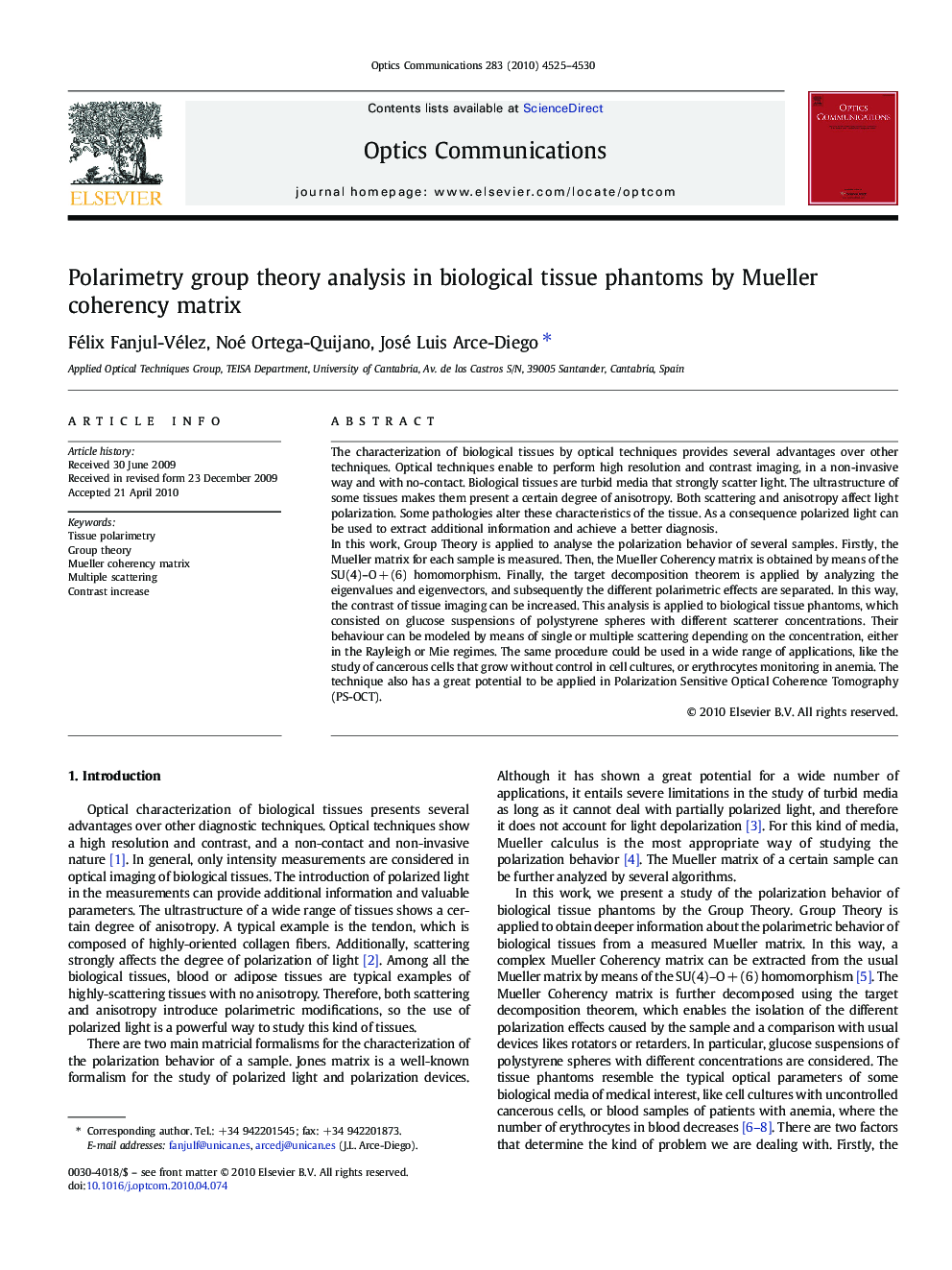| Article ID | Journal | Published Year | Pages | File Type |
|---|---|---|---|---|
| 1538817 | Optics Communications | 2010 | 6 Pages |
The characterization of biological tissues by optical techniques provides several advantages over other techniques. Optical techniques enable to perform high resolution and contrast imaging, in a non-invasive way and with no-contact. Biological tissues are turbid media that strongly scatter light. The ultrastructure of some tissues makes them present a certain degree of anisotropy. Both scattering and anisotropy affect light polarization. Some pathologies alter these characteristics of the tissue. As a consequence polarized light can be used to extract additional information and achieve a better diagnosis.In this work, Group Theory is applied to analyse the polarization behavior of several samples. Firstly, the Mueller matrix for each sample is measured. Then, the Mueller Coherency matrix is obtained by means of the SU(4)–O + (6) homomorphism. Finally, the target decomposition theorem is applied by analyzing the eigenvalues and eigenvectors, and subsequently the different polarimetric effects are separated. In this way, the contrast of tissue imaging can be increased. This analysis is applied to biological tissue phantoms, which consisted on glucose suspensions of polystyrene spheres with different scatterer concentrations. Their behaviour can be modeled by means of single or multiple scattering depending on the concentration, either in the Rayleigh or Mie regimes. The same procedure could be used in a wide range of applications, like the study of cancerous cells that grow without control in cell cultures, or erythrocytes monitoring in anemia. The technique also has a great potential to be applied in Polarization Sensitive Optical Coherence Tomography (PS-OCT).
